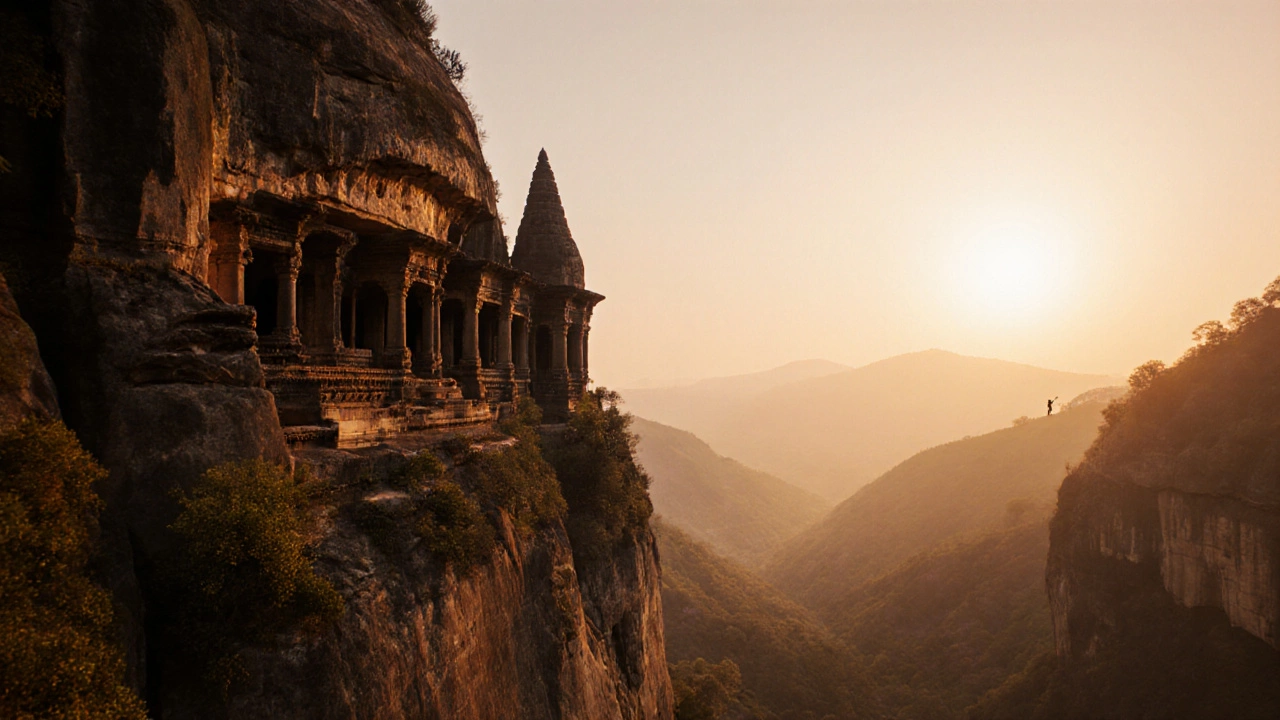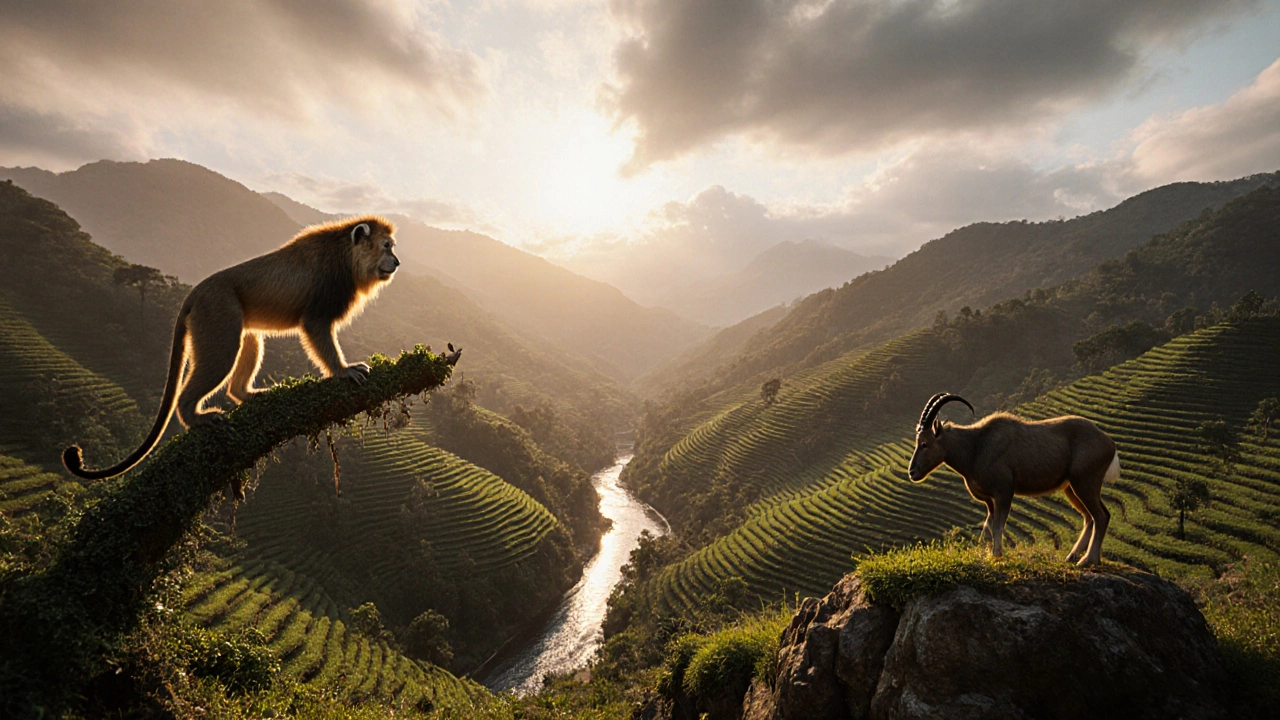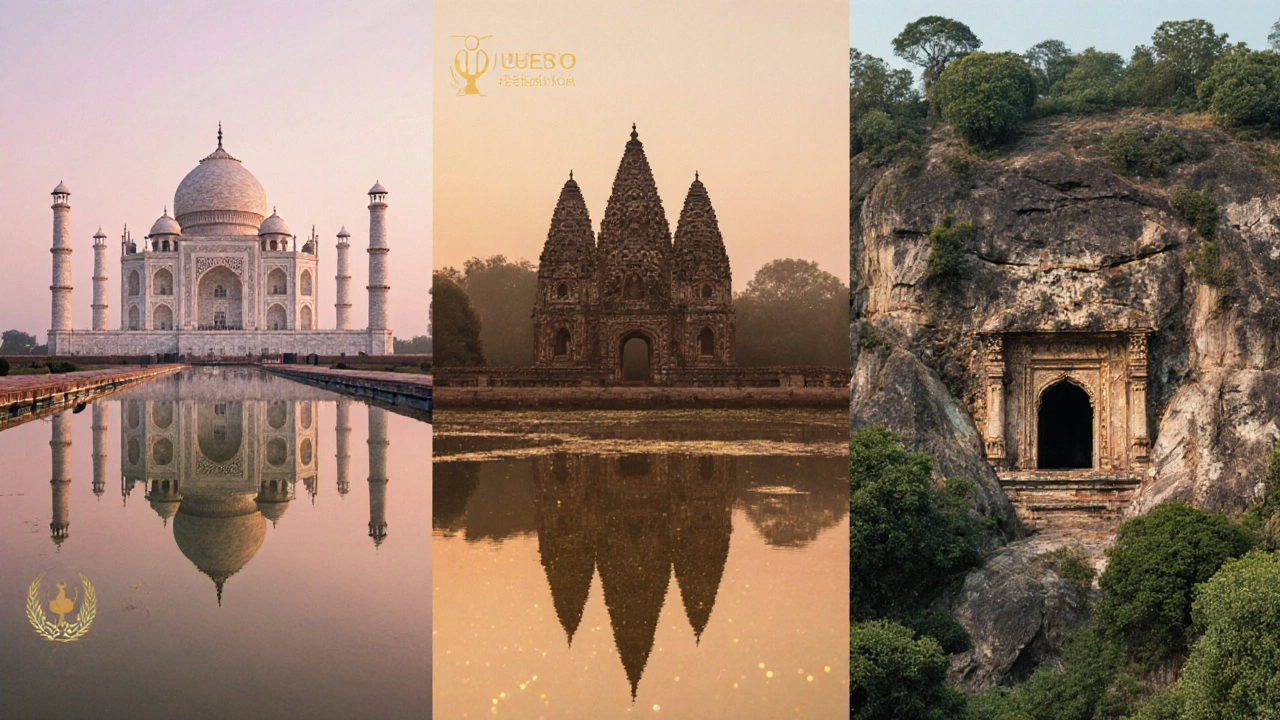India's Oldest UNESCO World Heritage Site - Discover the Ajanta Caves

Historical Age Calculator
Discover Ajanta's Age in Your Time
Enter the current year to see how ancient the Ajanta Caves really are compared to other World Heritage Sites
Ever wondered which Indian landmark holds the title of the oldest World Heritage Site India can claim? The answer lies hidden in a series of rock‑cut caves that have been mesmerizing travelers for centuries. Below we unpack why the Ajanta Caves are not just the first UNESCO inscription for India, but also the oldest surviving monument among the world‑heritage roster.
What is a UNESCO World Heritage Site?
In 1972 the United Nations Educational, Scientific and Cultural Organization (UNESCO) launched the World Heritage Convention to protect cultural and natural places of outstanding universal value. Every site that makes the list must satisfy at least one of ten criteria ranging from architectural brilliance to ecological significance. Once inscribed, a site gains international recognition, legal protection measures, and often a boost in tourism.
India’s First Batch of Inscribed Sites (1983)
When India first submitted properties, UNESCO accepted five locations in 1983: the Ajanta Caves, the Ellora Caves, the Agra Fort, the Taj Mahal, and the Sun Temple at Konârak. All five share the same inscription year, but they differ dramatically in age. The Ajanta Caves, carved between the 2nd century BCE and the 6th century CE, predate the others by over a millennium.
Why Ajanta Caves Are the Oldest
Ajanta Caves sit in the Sahyadri hills of Maharashtra, western India. Buddhist monks began excavating the first chambers around 150 BCE, using hand tools to carve out prayer halls, monastic cells, and elaborate murals. The most celebrated phase, known as the “Second Caves” (5th century CE), showcases frescoes that depict Jataka tales with a sophistication unmatched elsewhere.
While the Ellora Caves (6th century CE) and the Sun Temple (13th century CE) are impressively ancient, none reach the centuries‑old origins of Ajanta. Even the Taj Mahal, built in the mid‑17th century, is far younger. Hence, among India’s UNESCO sites, Ajanta holds the earliest chronological birthdate.
Key Features That Made UNESCO Take Notice
- Exceptional Buddhist art - the murals blend Indian, Persian, and Hellenistic influences.
- Innovative rock‑cut architecture - 30 caves carved from a sheer basalt cliff.
- Preservation of early Indian script - several caves contain inscriptions in Prakrit and Sanskrit.
- Landscape integration - the caves are positioned to capture optimal light for the frescoes.

Comparative Snapshot of India’s Early World Heritage Sites
| Site | Inscription Year | Chronological Age | Primary Culture |
|---|---|---|---|
| Ajanta Caves | 1983 | 2nd century BCE - 6th century CE | Buddhist |
| Ellora Caves | 1983 | 5th century CE - 10th century CE | Hindu, Buddhist, Jain |
| Agra Fort | 1983 | 16th century CE | Mughal |
| Taj Mahal | 1983 | 17th century CE | Mughal |
| Sun Temple, Konârak | 1984 | 13th century CE | Hindu |
Visiting Ajanta Caves: Practical Tips
- Best time - October to February when temperatures are mild.
- How to get there - Fly to Aurangabad (nearest airport), then take a 2‑hour taxi ride.
- Entry fees - INR 250 for Indian nationals, INR 600 for foreigners (as of 2025).
- Guided tours - Hire a certified guide to decode the fresco stories; a 2‑hour tour costs about INR 300.
- Preservation etiquette - No flash photography, stay on marked paths, and avoid touching the walls.
Preservation Challenges and Ongoing Efforts
Because the murals are over a thousand years old, they are vulnerable to humidity, fungal growth, and human traffic. The Archaeological Survey of India (ASI) collaborates with UNESCO to monitor humidity levels, apply non‑invasive cleaning, and limit visitor numbers during peak season. Recent laser‑scanning projects (2022‑2024) have created detailed 3D models, allowing virtual tours while protecting the physical site.

Impact on Local Communities
Around 150 small businesses-from homestays to souvenir shops-depend on tourism to the Ajanta region. The World Heritage label has spurred infrastructure upgrades (better roads, reliable electricity), yet it also raises concerns about cultural commodification. Community‑led initiatives now aim to channel a portion of ticket revenue into local schools and conservation workshops.
Frequently Asked Questions
When were the Ajanta Caves first discovered by the modern world?
European travelers first documented the caves in 1819, when a British officer named John Smith stumbled upon them while hunting.
How many caves are part of the Ajanta complex?
The site comprises 30 caves, numbered 1 through 30, each with a distinct purpose - meditation, worship, or living quarters.
Are the frescoes still original?
Most of the wall paintings are original, though some have been retouched in the 20th century to stabilize flaking pigments.
What languages appear in the cave inscriptions?
Inscriptions are primarily in Prakrit, Sanskrit, and a few in early Marathi, reflecting the multilingual patronage of Buddhist donors.
Can I visit the caves at night?
No - the site closes at sunset to protect the murals from light exposure.
How does Ajanta compare to other Buddhist World Heritage Sites globally?
Ajanta is older than most Asian Buddhist sites like the Borobudur (8th century) and the Mahabodhi Temple complex (5th century), making it a prime reference point for early Buddhist art.
Wrapping Up
If you’re hunting for the oldest UNESCO treasure in India, the Ajanta Caves are the undisputed answer. Their blend of ancient art, engineering marvel, and spiritual significance sets a benchmark not just for Indian heritage but for world culture. A visit there isn’t just a photo‑op; it’s a step back into a civilization that shaped the very notion of storytelling through stone.

